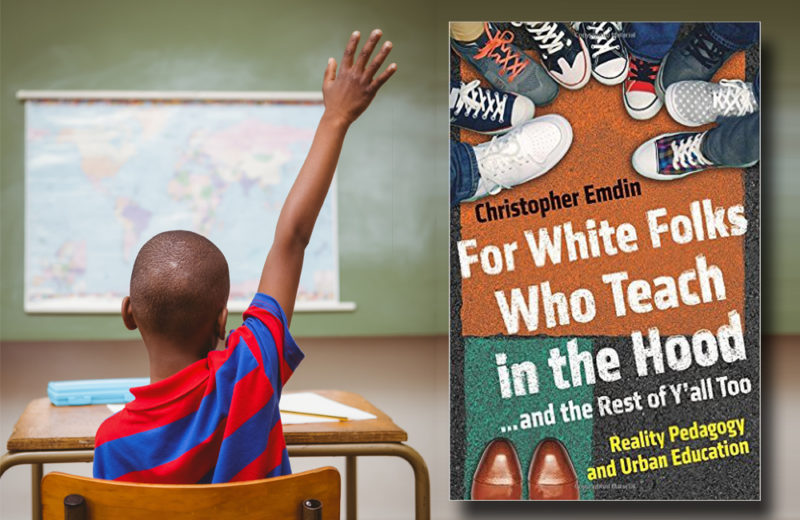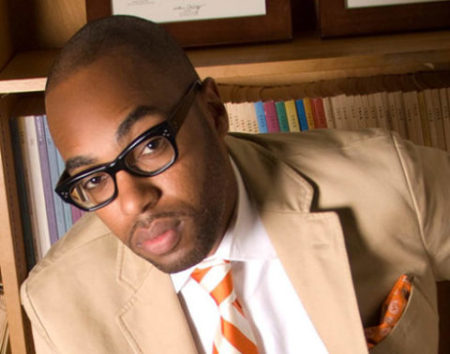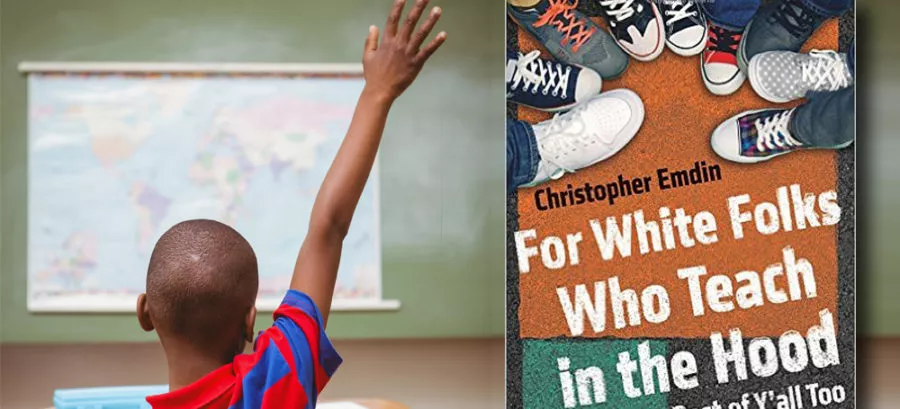 Dr. Christopher Emdin is a passionate and unapologetic advocate for the advancement of urban education nationwide. In his book, For White Folks Who Teach in the Hood…and the Rest of Y’all Too, Emdin, an associate professor at Columbia University’s Teachers College, conveys his methods of “reality pedagogy” and challenges the biased perception of inner city youth being “unreachable.” White educators are not in the classroom to "save" students, he writes, but should focus instead on integrating the cultures and views of the students into the learning experience. As the teacher’s perception of the students changes, Emdin believes, so will the students’ attitudes towards the value of education. Emdin, a former high school teacher, recently spoke with NEAToday.
Dr. Christopher Emdin is a passionate and unapologetic advocate for the advancement of urban education nationwide. In his book, For White Folks Who Teach in the Hood…and the Rest of Y’all Too, Emdin, an associate professor at Columbia University’s Teachers College, conveys his methods of “reality pedagogy” and challenges the biased perception of inner city youth being “unreachable.” White educators are not in the classroom to "save" students, he writes, but should focus instead on integrating the cultures and views of the students into the learning experience. As the teacher’s perception of the students changes, Emdin believes, so will the students’ attitudes towards the value of education. Emdin, a former high school teacher, recently spoke with NEAToday.
What are trends in education over the last few years or so that prompted you to write the book?
Chris Emdin: I think the biggest trend in contemporary education that I found problematic, is that it’s layered. There is a high number of educators teaching in schools highly populated with students of color that don’t reflect the community. If you go in schools right now, almost all black schools have a 90% white staff. And of course you hear or see that and go “well, that’s interesting," but most of these staff don’t live in the community, they don’t understand the community, they don’t know the socio-economic background of the community, and have a perception about those students based upon were they come from.
There are teachers who are not being trained appropriately. Not to speak negatively about education schools, but there are people coming out of school with a Masters or Bachelor’s in education, taking one class in multiculturalism, or one class on ethnicity, race and politics. Then these teachers go into spaces where race, politics, ethnicity and class are the biggest factors they have to face. There’s also the idea of the hyper-scripted curriculum that the teachers don’t have the space to ask the students about who they are.
 Chris Emdin
Chris Emdin
What has been the reaction of white educators to the title of the book?
CE: I’ve gotten everything from “Oh wow, thanks for telling the truth!” to “This man is racist." I’ve gotten to the point in time, my life and my mission where I’m not going to allow political correctness to inhibit me from saying what needs to be said. If you’re not ready to talk about that fact that you are white in a black and brown school, then you shouldn’t be ready to teach in that school.
I'm not demonizing white folks or speaking to just white folks, I’m speaking to the rest of y’all too! There are black folks who also enforce those same white supremacist ideologies. The tools are for everyone, the tools are for the fact that we have 80% of white people in urban schools, but it’s also for you black and brown educators who are conditioned to accept the pedagogies that white folks are implementing. It ain’t about being racist, it’s about being aware of race.
You say many white teachers come into the classroom believing that children of color need to be "saved." What does that mean exactly, and why is this approach counterproductive?
CE: The vision that kids need to be saved equates to thinking something’s wrong with them. There’s no teacher who should go into a space thinking that the students are inherently bad. If you are walking into a classroom and see students as victims, you are seeing them as having an inherent flaw that only you can fix. You [the teacher] are there to help them learn and allow them to do fixing for themselves.
The savior complex is also problematic because it reinforces the notion that the teacher is the hero. To be a good teacher the effective skill you need is not ego. It’s humility. You look at the natural, raw, unpolished beauty of the neighborhood, and if you are looking to save someone, you cannot see that.
How can a teacher successfully bring to a classroom the pedagogy of co-teaching along with the class, or, as you call it, "the structure of a hip-hop cipher"?
CE: The beginning step is to understand that you are a partner in the process. When we talk about education, we are talking about teaching and learning at equal value. To be able to maximize the opportunity for people to be able to learn, it requires maximizing the opportunity for them to teach. The best teachers are also the best learners. Now, the teacher maybe an expert in content, but the students are the experts in their cultures. The best teachers learn that in order for them to be able to effectively deliver content, they must be willing to learn about the students.
The traditional model is very unitary: “I teach, you learn." But if I create the space where we teach and learn from each other, then we open up new spaces for us all. It’s not just for the students, it’s for the teachers as well, who then become better people when they learn. The problem is that the classroom experience is so scripted, that teachers don’t find the time to get to know their students.
How do we call attention to those subtly racist or stereotypical remarks (also known as micro aggressions) that are often made to minority students? For example, a white teacher talking slang to black students.
If you are walking into a classroom and see students as victims, you are seeing them as having an inherent flaw that only you can fix. You [the teacher] are there to help them learn and allow them to do fixing for themselves."
CE: The only way that we’re going to address those kinds of biases is to give the students the agency and the power to be able to call out what makes them feel uncomfortable. As a part of my pedagogy, I may create a group of maybe four kids or so where we discuss the class outside of class. Now, that may not happen in a classroom of 32 or 25, but if it’s a conflicting conversation between the teacher for three weeks in a row, the student should be able to come to them and express their concerns.
Teaching for social justice is so important, but many teachers, perhaps newer to the classroom, may not necessarily know what that means or have various definitions. What does teaching for social justice mean to you and do you see it gaining a foothold in classrooms?
CE: I feel like the work to advance social justice has become more visible. I hold talks, I get phone calls, and hundred of educators speak out on twitter speaking of social justice.
Social justice is the recognition of the fact that the system that we are living in, is actually complicit to the oppression of our people. For me, social justice is about awareness, and it’s about solution. How do you make people aware about patriarchy? Bias? The inequities that exist? Discrimination in communities? How do you make people aware that good, well-intentioned people are a part of the machine that is fulfilling violence against people of color? And then, after identifying the problem, what is the solution? Educators must think of how they will teach differently, about how they will change the curriculum to address these conditions.
What's the one best piece of advice you offer new educators in a school with predominantly marginalized students of color?
CE: “You are there not as a savior, but as a revolutionary." They must know that this work is also a civil rights issue. Teaching is not “just a job." There’s “jobs” on Wall Street, jobs in policy, but in the classroom, education is a responsibility. You have lives in your hands, and it’s a very powerful, serious and spiritual thing.
I just want new educators to understand just how deeply honored they should be to be able to do this work. Once they understand the severity of the work and what they’ve been charged to do, it will be a wonderful place. They must make sure they are going in for the right reasons first.


